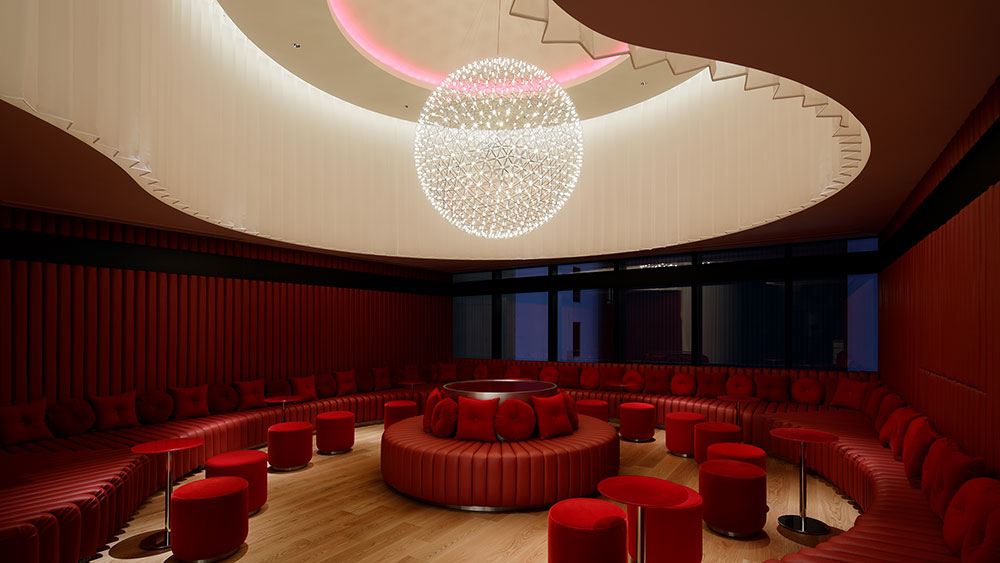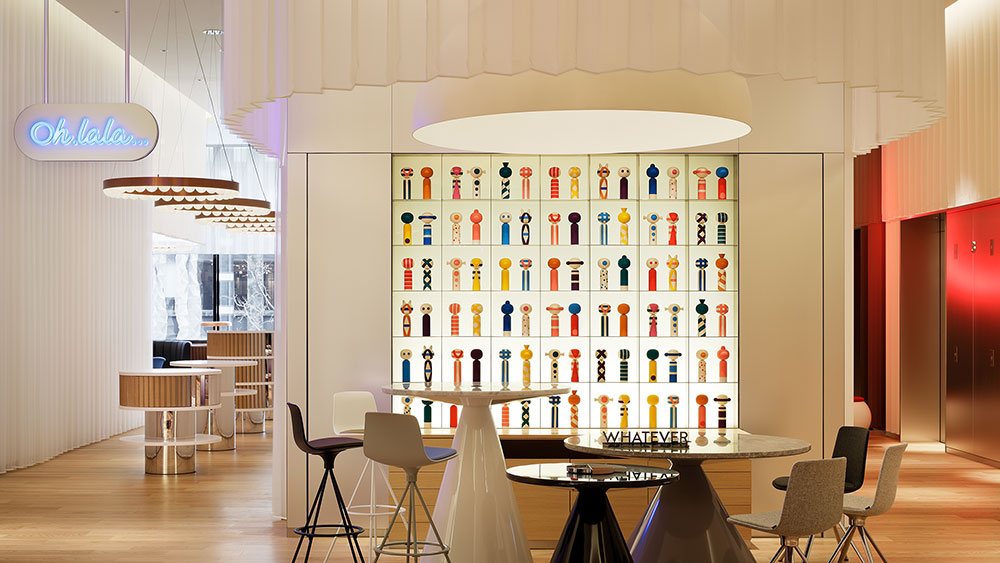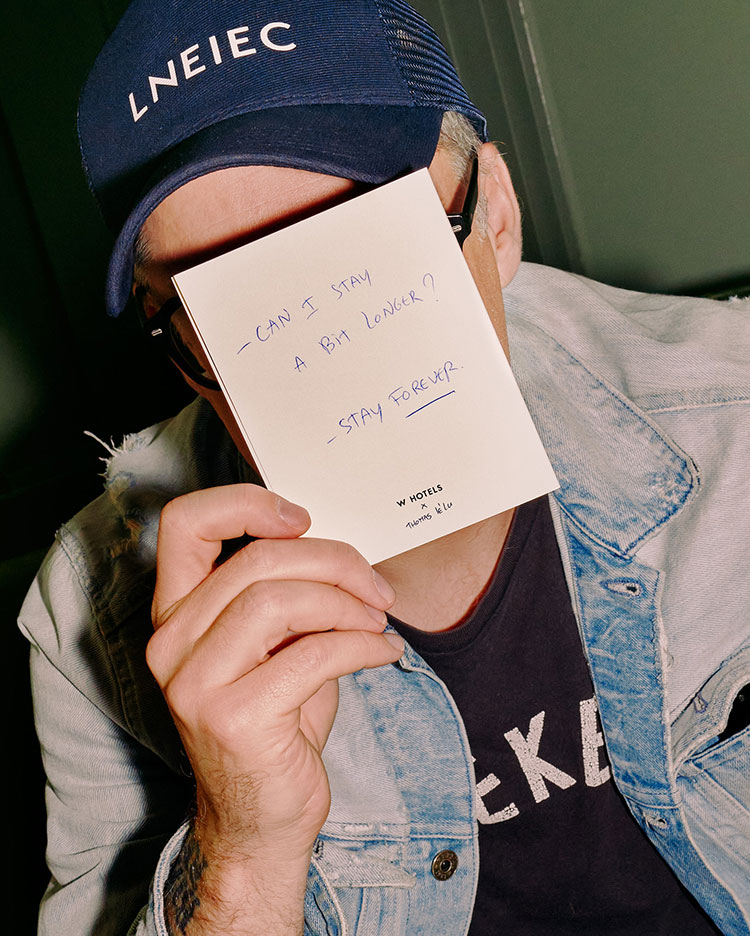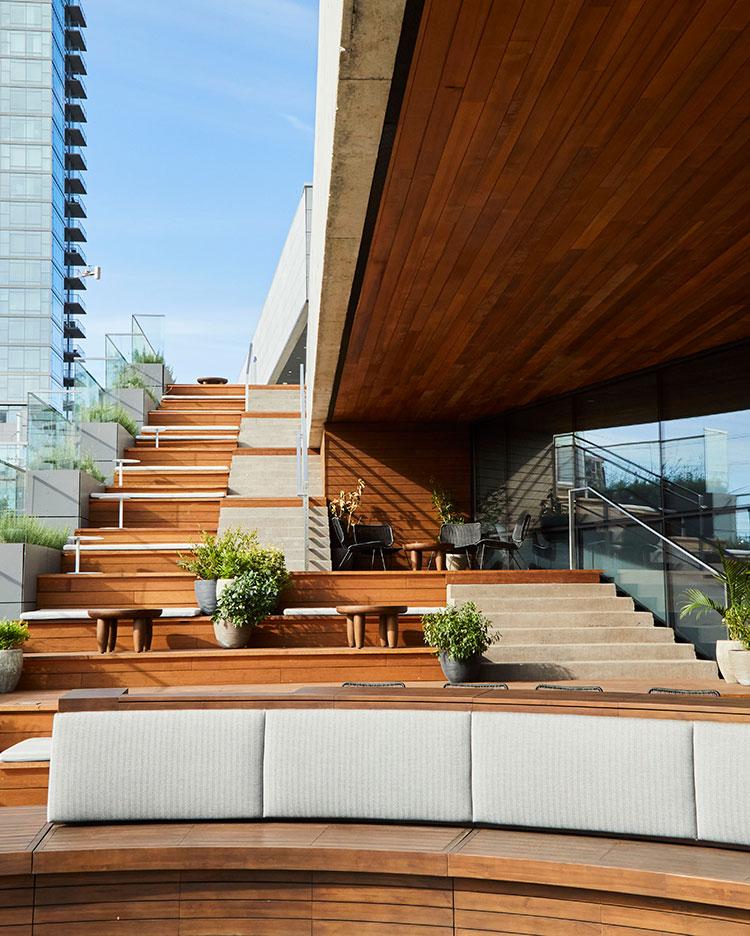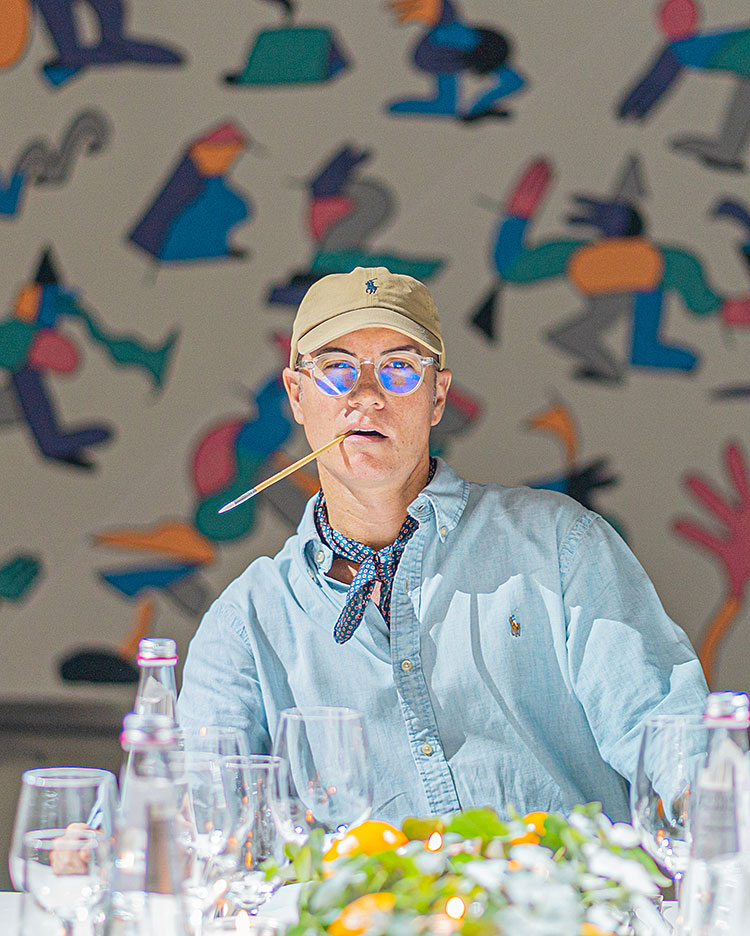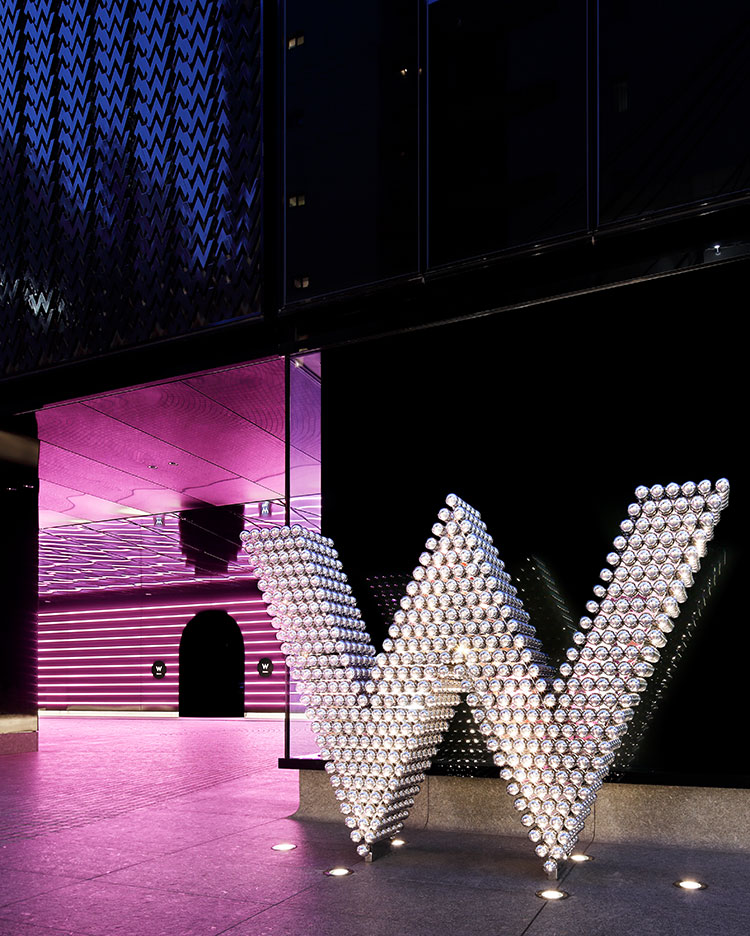
W Osaka: From Minimal to Maximal
W Osaka: From Minimal to Maximal
Not only a one-of-a-kind destination, the opening of W Osaka is also the first W Hotel in the Land of the Rising Sun. The hotel’s building was designed by Tadao Ando, the world renowned Osakan architect and marks an unmistakable addition to the city’s skyline.
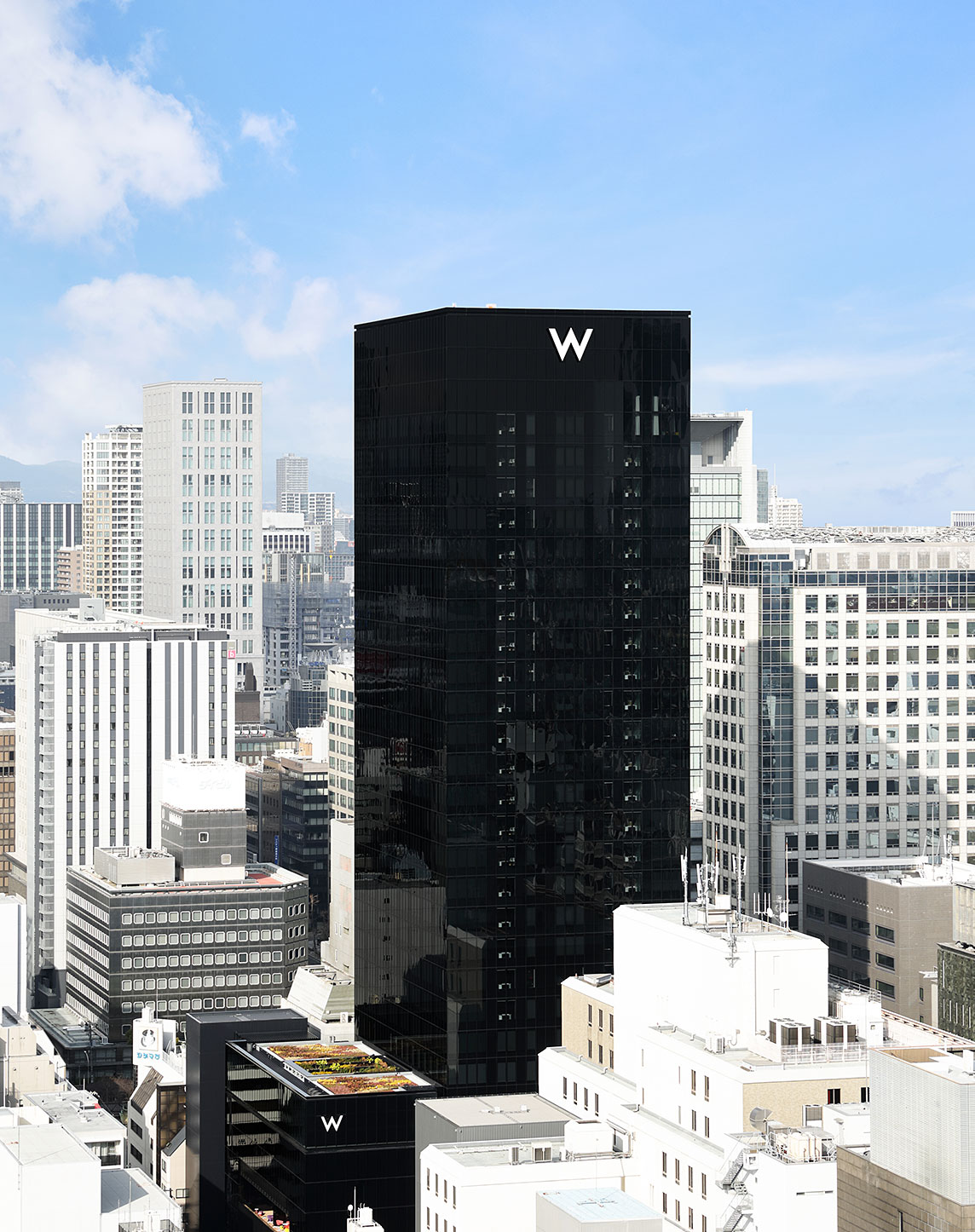
Rising from Midosuji Boulevard between the Shinsaibashi and Dotonbori districts, Ando’s vision for W Osaka is imposing yet serene, outstanding yet subtle, and instantly identifiable with its gleaming, jet-black monolith façade.
At the base of W Osaka, Ando’s monochrome cladding gives way to a rich, golden glow. As a kaleidoscopic complement to the architect’s minimalism, the hotel’s colorful inside spaces have been conceptualized by concrete, an Amsterdam-based design studio (they also worked on W London and W Verbier). The interior pays tribute to the endless thrills of Osaka’s urban life—and its unlimited texture—with an aesthetic that winks to Japan’s Edo period. Back then, public displays of wealth were banned. In private, however, exuberance kicked into overdrive. W Osaka’s outdoor-to-indoor flow embodies this sentiment in a very future-glancing manner.
Once in-house, that exuberance becomes all-encompassing. To enter W Osaka, guests find themselves walking through a digitally illuminated tunnel that draws inspiration from Japan’s vibrant cherry blossom season.
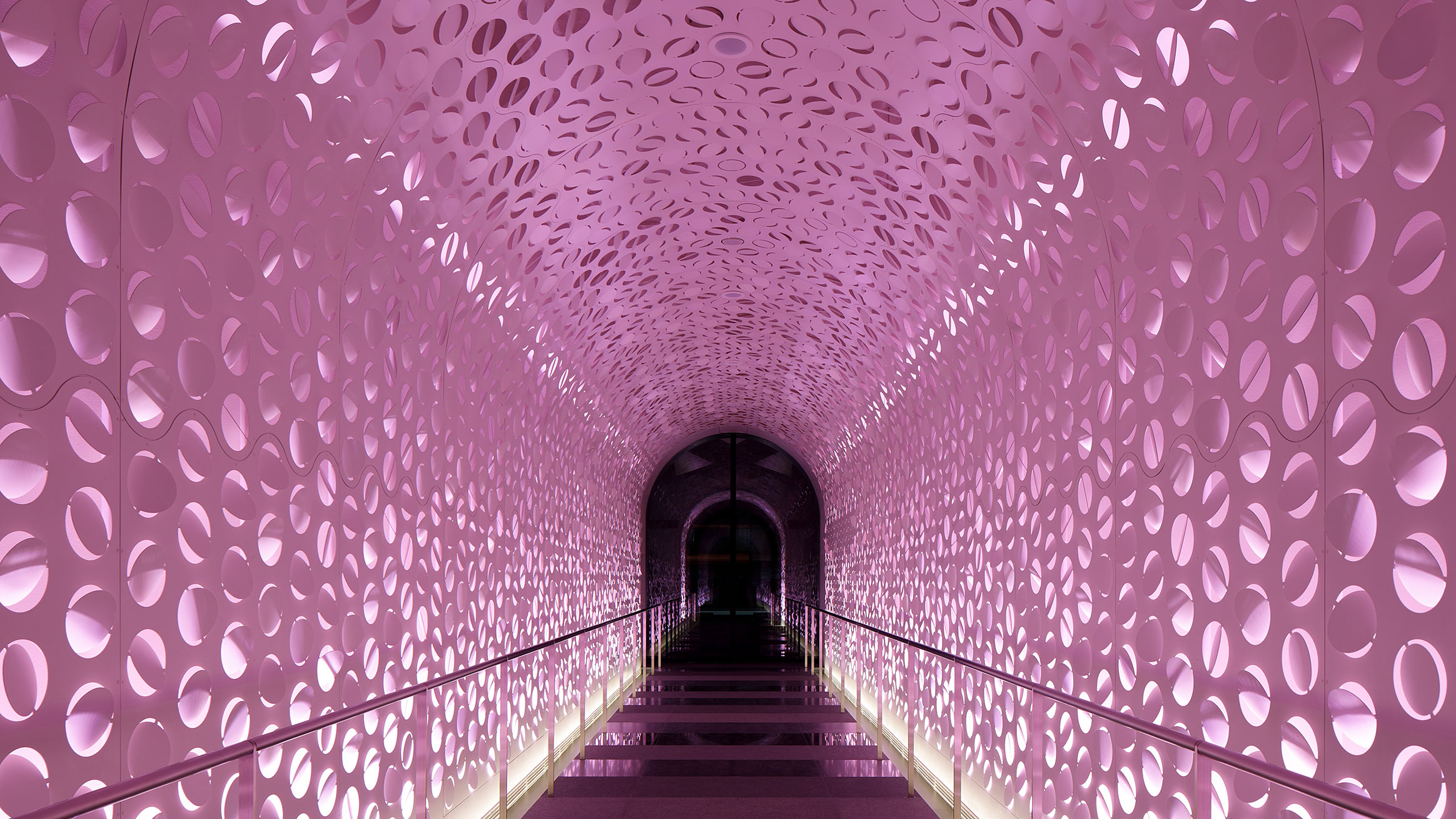
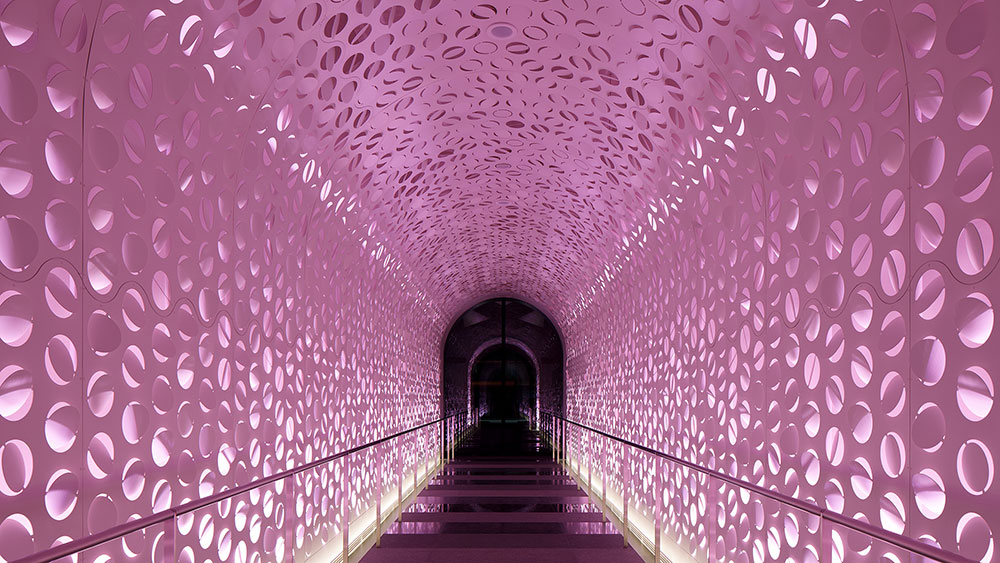
From there, the third floor Living Room, which functions as the social core of the hotel, is rife with vivid chroma and a pop design twist that reinterprets Kawaii Kokeshi dolls. Overall, brightness, clean lines and bold hues unfurl across the property.
If you’re a Tadao Ando fan in particular, be sure to check out his “Church of Light” when you’re visiting. Standing about 25 kilometers outside of Osaka, it’s a minimalistic masterpiece that’s made almost entirely of washed gray concrete. It looks somewhat nondescript from the street, but once inside, you’ll find a glowing, stark Latin cross, backlit by the sun. We like the parallel: What appears as simple on the outside may open up to a whole new world of intrigue once you step through the front door.
Konnichiwa, W Osaka.
